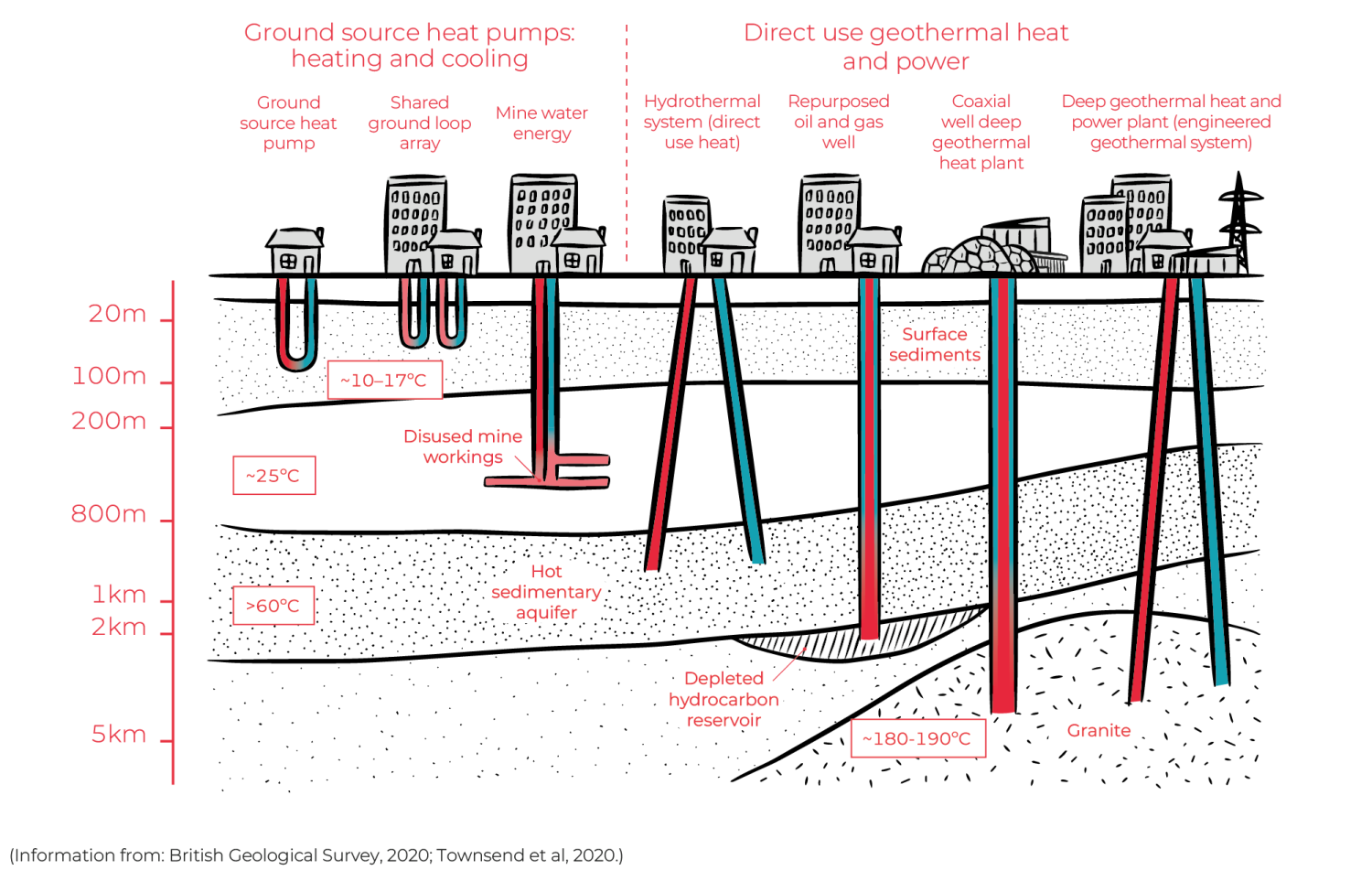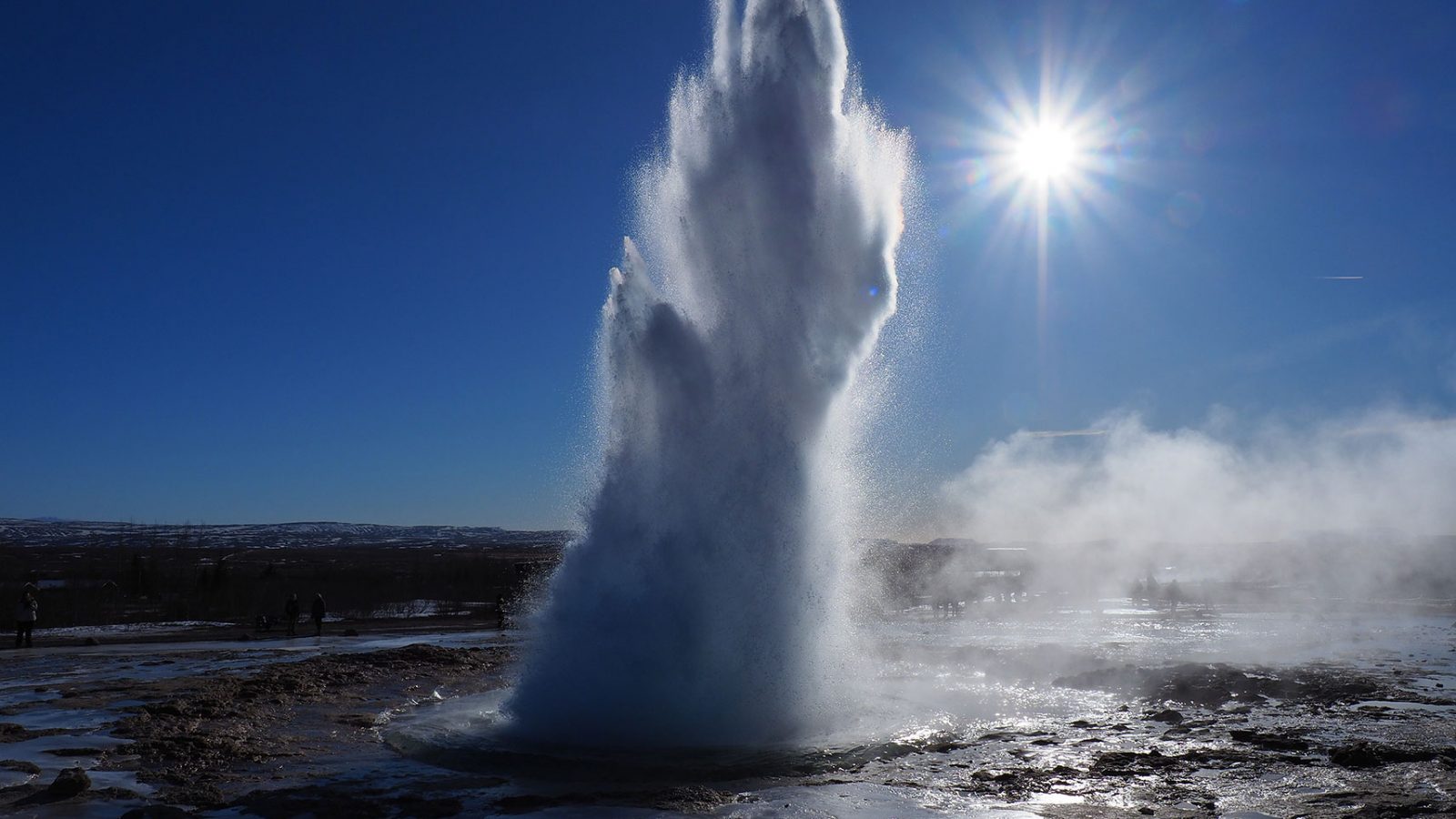The climate emergency, coupled with issues around energy security and fuel poverty, mean that our energy systems must be entirely revised.
We need home-produced, affordable and long-lasting energy sources. But we must also act now to halt climate change – so dependence on fossil fuels isn’t an option. By 2050, in the working life of anyone in their mid-thirties, greenhouse gas emissions in the UK will be net zero, and to achieve this, all electricity and heat will have to be as close to zero emissions as possible.
Geothermal heat
Heat accounts for around 40% of UK energy consumption and is responsible for nearly a third of UK greenhouse gas emissions. So we’ll only achieve our commitment to net zero by 2050, and the UK’s interim target of a 78% cut in greenhouse gas emissions by 2035, if we decarbonise our heat supply.
Geothermal is a renewable and very low carbon source of heat which:
- Is everywhere: available beneath our feet throughout the UK – there’s no need to import it;
- Could easily supply all the renewable, decarbonised heat we need, many times over;
- Is constant and available 24 hours a day, whatever the weather;
- Can be harnessed from depths of just a few metres to several kilometres to heat our homes, workplaces and leisure facilities, and to replace fossil fuels in heat-intensive industrial and agricultural processes;
- Has minimal visual impact – with the smallest surface footprint of any energy source and no buildings higher than 10m;
- Is popular with the public. When Eden Project and EGS Energy took a geothermal exhibition to the Royal Cornwall Show in 2013, we asked the question ‘Do you support geothermal development in Cornwall?’ Over 99% of those who responded said ‘yes’.

Geothermal power
In some circumstances, geothermal can also be used to generate dispatchable, low carbon electricity. While heat can be extracted anywhere, geothermal electricity generation requires certain geological conditions, and those conditions don’t exist everywhere. But even in the UK, geothermal has the potential to supply the 20% of the country’s electricity needs.
- Unlike other renewable energy sources, geothermal electricity plants are ‘on’ 24 hours a day, and have very little visual or surface impact. Geothermal power is permanently available and independent of the weather.
- The technology relies on the heat from the earth, a virtually infinite resource, unlike fossil fuels. It does not rely upon the use or import of raw materials as for example biomass does. With no variable fuel costs or fuel supply issues, geothermal plants can be run at full tilt and have a typical capacity factor of more than 90% – i.e. they are in active use for almost all the time.
- As a distributed base load electricity generator, and with the potential to be used as a dispatchable load that can be ramped up and down at will, geothermal generators can help support the national grid and local distribution grids, a feature becoming ever more important with increasing numbers of solar and wind developments.
- The development of the geothermal industry will produce a number of high value jobs, through direct employment and spin-off industries. Based on a study by the Geothermal Energy Association, 100MW of installed capacity should produce between 1400 and 1700 full-time high-quality jobs, and build academic and engineering excellence in the regional universities.
Types of geothermal energy technologies










